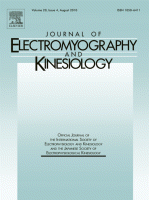Vibration of the Achilles tendon has a positive effect on the strength of the triceps calf muscle
Vibrotherapy applied using local vibration to muscles at rest increases muscle strength. Such a therapeutic protocol could be beneficial for inactive people or those unable to benefit from other forms of vibrotherapy (e.g. whole-body vibrotherapy).
Periods of physical inactivity adversely affect muscle strength. The use of large training equipment in a home environment is not possible. In such cases, vibrotherapy can be helpful. The aim of a research project carried out by French researchers was to test the effect of two weeks of vibrotherapy of the Achilles tendon on the strength of the triceps calf muscle. The project assessed maximal voluntary contraction in soleus flexion and electromyograms (EMGs) before and after the project.
- Fourteen days of daily one-hour vibrotherapy increased the strength of the soleus flexor muscle in voluntary isometric contractions by 7%.
- Vibrotherapy significantly improved maximal muscle activity (17%).
- The activation deficit index decreased by -10.1% and the activation deficit decreased by 44.4% after the application of 50 Hz vibration.
- Vibration does not affect muscle hypertrophy (muscle volume gain) but strength gains are associated with improved muscle activation.
- Vibrotherapy applied topically to muscles under resting conditions can prevent or delay loss of muscle strength, which is particularly important in people with limited or no physical activity.
Compiled from:

Effects of repeated Achilles tendon vibration on triceps surae force production.Thomas Lapole, Chantal Pérot. Journal of Electromyography and Kinesiology 20 (2010) 648–654
Study population
Twenty-nine volunteers with a mean age of 21.7 ± 1.7 years, a mean body weight of 71.7 ± 14.1 kg and a mean body height of 1.77 ± 0.09 cm participated. All consented to participate in the research procedure.
Study procedure
Bipolar surface electromyographic electrodes were placed on each group of the triceps calf muscle. In order to normalise the electromyographic signal, prior to the first testing session, participants were familiarised with the method of electrical stimulation (single electrical pulses delivered to the posterior tibial nerve), the correct execution of soleus flexion and maintaining muscle tension levels below maximum torque (subjects sat on an adjustable ergometer). Electrical stimulation elicited direct motor responses (M-wave). The intensity of the stimulus was increased until all motor axons were engaged and the maximum M-wave (highest amplitude) was achieved. The subjects were also instructed to use a device with which they were to conduct a two-week programme of daily hourly vibration on the Achilles tendon of the right ankle. Tests at the end of the project were performed the day after the last vibration session. Various parameters were calculated from the mechanogram of the muscle (a record of the course of muscle force over time): peak torque, contraction time, partial relaxation time, rate of torque development and rate of relaxation. Neuromuscular efficiency was calculated as the ratio of the average peak moment amplitude and maximum force. This parameter can inform about possible changes in intramuscular properties. For each parameter, considering the totality of the subjects included, the average gain of the vibration programme was calculated according to the formula: Mean gain = [(Post-test value) – (Mean of three reproducibility tests)] / [Mean of three reproducibility tests].
Use of vibration therapy in the study
A vibration device was used with a frequency of 50 Hz and an amplitude of 0.2 mm. Vibration was applied to the Achilles tendon of the right ankle for 1 hour per day in a sitting position.
Results
An increase in the strength of maximal voluntary muscle contraction of approximately 7% was observed after the research project. Maximum muscle activity also increased significantly (17%). The activation deficit index and activation deficit decreased after vibrotherapy by -10.1% and 44.4%, respectively. When considering the individual gains between the mean of the three reproducibility tests and the post-test for all calculated parameters, some correlations were observed. Maximal muscle strength influenced the increase in muscle activity of muscles antagonistic to the triceps calf muscle.
Summary
The aim of the project described here was to investigate whether a home-based treatment that focused on direct vibration of the Achilles tendon could increase soleus flexor muscle strength in healthy adults. The vibration programme used lightweight equipment that can be applied to people in a hypoactive situation (low physical activity). For this purpose, a portable device vibrating at 50 Hz was strapped onto the Achilles tendon. After 14 days of daily vibration, force production of the soleus flexor muscles increased with voluntary isometric contractions. This supports the findings suggesting that consistent force gains are produced after different vibration programmes. As vibration does not cause muscle hypertrophy (muscle volume gain), the authors of the publication argue that the strength gains shown in the study can only be explained by improved muscle activation. This is confirmed by the increase in electromyography of the triceps calf muscle, which is significantly correlated with strength gains and the constancy of neuromuscular performance during voluntary contractions. The effects of vibration training, are mainly neural adaptations, influencing increased muscle activation. However, the exact mechanisms responsible for improved muscle activation remain unknown.
Thus, using the described vibrotherapy modality, which uses a portable vibrating device on muscles under resting conditions, it is possible to prevent or delay the loss of muscle strength. The described research project was conducted on healthy individuals, so further studies, on a wider group of people, are needed to confirm the above results.
More in:


